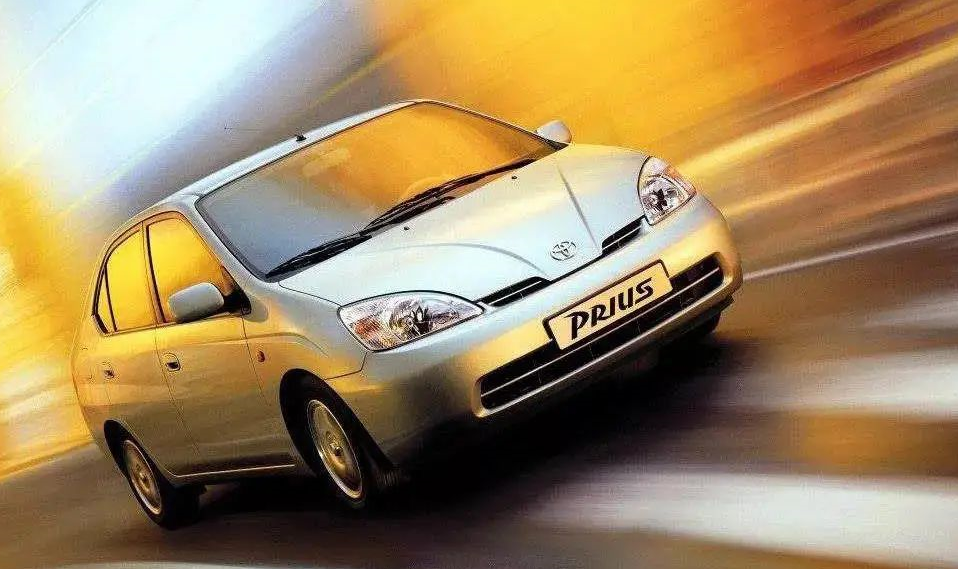Changes in the Competition Pattern of the Automotive Industry
Author: Zheng Wen
Editor: Zhou Changxian
It seems that every time there is an oil crisis, the competition pattern of the automotive industry changes.
The Fourth Middle East War in 1973 and the Iranian Revolution in 1979 brought two oil crises to the world. After the first oil crisis, Japanese car companies took advantage of the fuel-saving benefits of small engines and successfully entered the largest automobile market in the world, the United States, thereby transforming the global automotive industry from being dominated by Europe and America to a three-legged situation with Europe, America and Japan. The second oil crisis directly caused a severe stagnation and recession in the world economy.
In 1990, the third oil crisis broke out, and the Gulf War caused the price of crude oil to rise from $17 per barrel to $36 per barrel in just three months. The pressure of rising oil prices was transmitted to the consumer side, and “gas-guzzlers” such as pickup trucks and high-displacement cars produced by the Big Three in the United States were difficult to sell.
The story of hybrid cars was planted during the oil crisis.
Seven years later, the Toyota Prius was born. This model, which is powered by the “Toyota Hybrid System” consisting of an internal combustion engine and an electric motor, revolutionarily reduces vehicle fuel consumption and tailpipe emissions. Its advancement has been highly regarded worldwide and became the most reasonable substitute during the era of high oil prices.
In fact, General Motors had already mass-produced an electric vehicle, the EV1, to cope with the oil crisis, but this model, which cost $100,000 to manufacture and had a range of only 112 kilometers, quickly fell in the long history of the automotive industry.
Now, the conflict between Russia and Ukraine is ongoing. The highest fluctuation of the price of crude oil has reached $130 per barrel, and it is still over $110 per barrel after stabilizing, and the domestic oil price has also exceeded 9 yuan/liter.
Under such high oil prices, what kind of changes will occur in the automotive industry?
Crazy Sales
Recently, an alleged internal meeting minutes of BYD (Build Your Dreams) appeared online, showing that the number of unfulfilled orders has accumulated to about 400,000, and the ratio of DM-i to EV is 3:1.
Counting the new energy vehicle models under the BYD brand, there are 16 EV models and 5 DM-i models. The contribution of DM-i model single car orders far exceeds that of EV models. The sales volume of plug-in hybrid models has exceeded that of pure electric models for several consecutive months.Since the launch of BYD’s first DM-i model Qin PLUS DM-i in the first quarter of last year, BYD’s PHEV has been on a roll in the mainstream market. Currently, the DM-i hybrid series has sold a cumulative 272,000 units, with 90,000 units sold in the first two months of 2022.
It can be said that BYD has almost single-handedly made a significant contribution to the growth of the PHEV sub-segment.
The market storm caused by DM-i lasted from the beginning of the year until the end of the year. In January-February last year, domestic PHEV sales accounted for only 19.4% of BEV. This figure rose to 27.5% in January-February of this year. BYD contributed more than half of the sales, greatly increasing its contribution rate from 28% in 2020 to 43.6%.
It is worth noting that BYD’s hybrid models are priced at the same level as gasoline-powered cars in order to attack the market, which is of great significance for the popularization of hybrid models. Moreover, some hybrid models, such as the same model and configuration as the Song PLUS, have a guiding price that is 20,000 yuan cheaper than EV.
According to sales data from the China Association of Automobile Manufacturers, the penetration rate of PHEV models has remained at about 1.1% over the past three years, mainly because the sales price of PHEV models is at a disadvantage compared with gasoline-powered cars of the same model, usually with a gap of 20,000 to 50,000 yuan.
Another success story comes from emerging automakers. In February of this year, Ideal ONE, a plug-in hybrid six-seat SUV, delivered 8,414 vehicles, bringing the cumulative total to 144,700 vehicles since its launch. With this model, Ideal Auto steadily ranks among the top three sales leaders among emerging automakers.
Recently, Ideal Auto announced its second vehicle model, L9, which is still a plug-in hybrid with a pure electric range of 200km and a total range of 1,200km on full charge and full fuel.
The phased success of BYD, Ideal, and other automakers has enabled more companies to see the market opportunities brought by the hybrid market.
Interestingly, although there is already consensus within the industry that “hybrids are just transitional models from gasoline cars to pure electric cars,” hybrids still have great industry growth potential and are becoming a new consensus.
Hybrid is no longer just Toyota and others in the world
From the first generation Prius to now, Toyota has already had tens of millions of hybrid users worldwide. It has been able to dominate the market competition for a long time due to its technological blockade.The power system consisting of the engine, E-CVT, PCU, and battery achieves efficient engine operation at the core of the planetary gear through the feedback of the battery power, vehicle condition, and throttle control. The essence of this system lies in the planetary gear, which regulates the motor to work in the thermal efficiency-optimized range.
Due to the high patent barrier of the planetary gear, other players cannot participate in the competition. For more than 30 years, there has been a saying in the industry: there are only two types of hybrid systems in the world, one is Toyota Hybrid, and the other is the rest.
Slowly but surely, Honda bypassed the barrier and developed the i-MMD system, and the HEV market started to blossom. Since last year, hybrid technology has exploded in the Chinese market, and many domestic brands have released hybrid technology, resulting in a wide variety of choices.
The BYD DM-i super hybrid platform was released in January last year, adopting a “DM-i+DM-p dual-platform” strategy, with DM-i focusing on fuel economy and DM-p emphasizing power acceleration performance.
From the start of development in 2004 to the birth of the DM-i, BYD’s hybrid technology has developed to the fourth generation. Compared with the previous generation DM technology, DM-i has two obvious advantages, an increase in pure electric cruising range to cover most travel needs, and improved fuel consumption.
The BYD DM-i model currently occupies the leading position in the plug-in hybrid sub-segment of the Chinese market, not only due to its technological advantages but also its decreasing cost, occupying most of the 100,000 to 200,000 yuan plug-in hybrid market.
On March 12, the 2022 Sonata MAX DM-i officially went on sale for a comprehensive subsidy price of 145,800-172,800 yuan. At the same time, BYD announced that the Sonata MAX fuel version would be discontinued and sold out.
In addition to the BYD DM-i, there are also the Geely Emgrand EV Hybrid, Great Wall Lemon DHT, Changan Blue Whale iDD, SAIC EDU Gen2, GAC GMC2.0, and Chery Kunkun DHT. Although their technical paths are different, they all have their own unique strengths in terms of comprehensive fuel consumption, cruising range, etc.
On October 31, 2021, Geely Automobile launched its new power technology brand “Thunder Power” and launched the modular intelligent hybrid platform, the Geely Emgrand EV Hi-X.
The thermal efficiency of the Hi-X is as high as 43.32%, with a fuel-saving rate of over 40%, including the 1.5TD/2.0TD exclusive hybrid engine and the DHT/DHT Pro exclusive hybrid transmission. It supports full coverage of A0-C grade models and various types of hybrid technology, such as HEV, PHEV, and REEV.# Henan智擎 Hi・X to be First Equipped on “China Xing”; Henan Hi・X Hybrid Model Star Yue L to be Launched
The Henan intelligent engine (Hi-X) will first be equipped on the “China Xing”, and the first car model equipped with the Henan Hi-X hybrid version, the Star Yue L, will be launched soon. In the next three years, more than 20 models from brands like Geely and Lynk & Co will be equipped with various power combinations, including mild hybrid, extended-range plug-in hybrid, and hybrid.
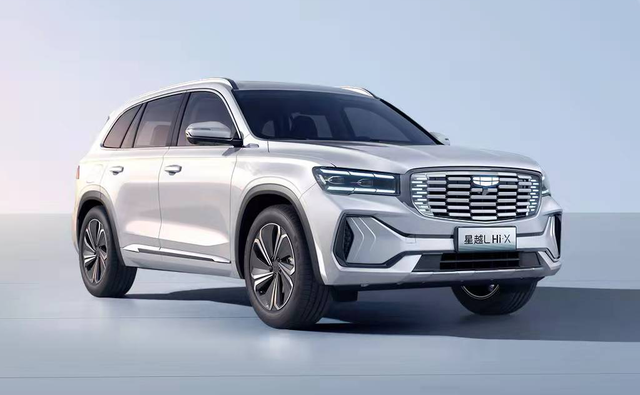
The Great Wall Lemon DHT hybrid includes two technological solutions: HEV and PHEV, adopting a dual-motor hybrid topology structure. Currently, there are already DHT hybrid versions of the Latte, Mocha PHEV, Machiato DHT, and DHT-PHEV under the WEY brand.
In addition, there’s also the Changan UNI-K iDD plug-in hybrid, the Chery Tiggo 8 PLUS Kungpeng e+…
The hybrid market, where Toyota no longer monopolized, has already achieved sufficient technological support for large-scale development.
Make Engines “Behave”
The principle of hybrid technology is to adjust the engine’s operating range to the optimal efficiency part by controlling the motor’s output, thus achieving the effect of improving thermal efficiency and reducing fuel consumption.
The thermal efficiency of the engine varies greatly at different speeds and torques, and is usually higher at moderate speeds and torques. The working point of traditional fuel cars cannot be actively adjusted, while hybrid technology can ensure that the engine works in the area of comprehensive efficiency.
When driving at low-speed with low power, the engine is redundant in terms of power; surplus energy is stored by the motor in the battery. When driving at high speed or acceleration, the previously stored electric energy is released to drive the engine, thereby providing additional power to the engine. This operation ensures that the engine works in the high-efficiency zone for most of the time.
A dynamic coupling transmission device is usually used to transmit torque and energy between the engine, motor, and wheels, similar to the transmission of a fuel car.
The operating modes of hybrid cars may include:
- Series drive: The engine transfers energy to the motor, and the output power is transmitted to the wheel end through the dynamic coupling transmission device.
- Parallel drive:
- Engine drive + Motor drive: The power output of the engine and motor is jointly transmitted to the wheel end through the dynamic coupling transmission device.
- Engine drive + Motor power generation: The engine transmits the output power to the wheel end through the dynamic coupling transmission device, and also outputs power to the motor. The energy is stored in the battery through the motor to generate power.
- Pure electric drive: When the engine is not working, the motor transmits output power to the wheel through the dynamic coupling transmission device.Regenerative braking: During deceleration, the wheels transfer the energy of deceleration to the motor through a power coupling device, and the motor stores the energy in the battery.
And there are significant differences in the various hybrid HEV, REEV, and PHEV configurations available on the market.
For example, the extended-range hybrid system (REEV) installed on the Ideal ONE and the Seres SF5 is a typical series-parallel configuration. Under the series connection structure, the vehicle can only operate in the “series mode” and “pure electric mode” of the above operating modes. The engine only drives the generator to generate electricity, and the driving wheels are driven only by the driving motor.
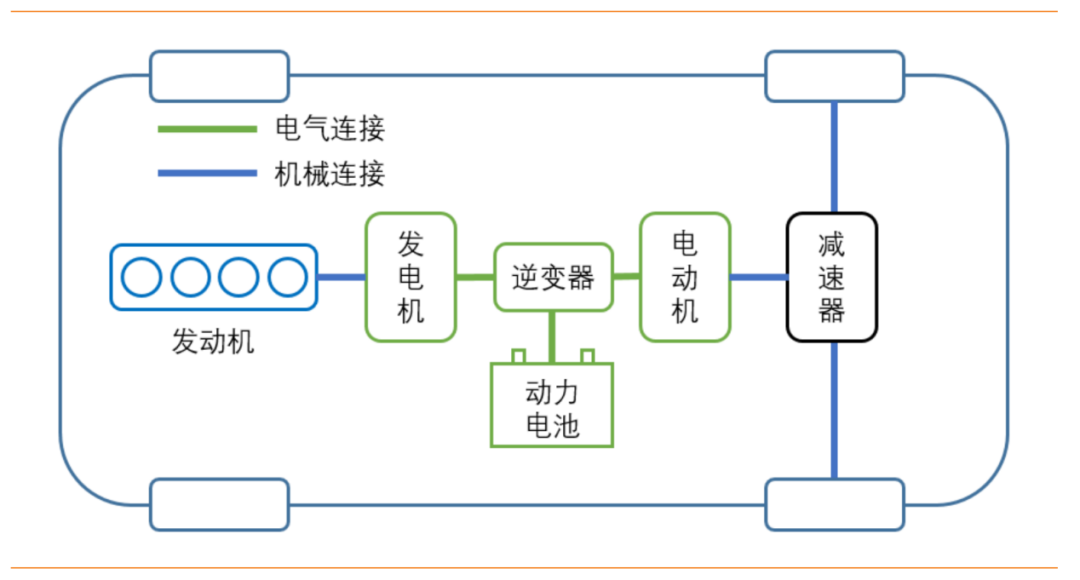
Parallel configurations usually achieve parallel or pure electric modes through a single motor. With this configuration, the engine can directly participate in driving the vehicle, but the parallel drive mode cannot be achieved. The SAIC EDU Gen2 system is a parallel configuration.
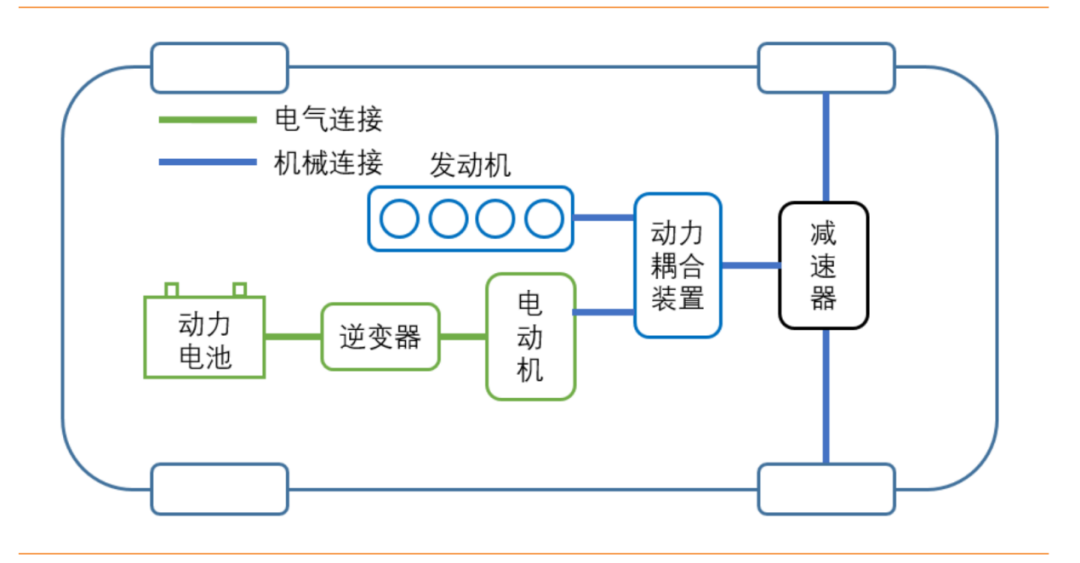
Hybrid (series-parallel) configuration: Ability to travel in series mode and parallel mode at the same time. The THS hybrid system of Toyota in Japan, the i-MMD hybrid system of Honda, the BYD DM-i hybrid system, the Geely Lynk & Co. E05 Hi・X system, and the Great Wall Lemon DHT are all hybrid configurations.
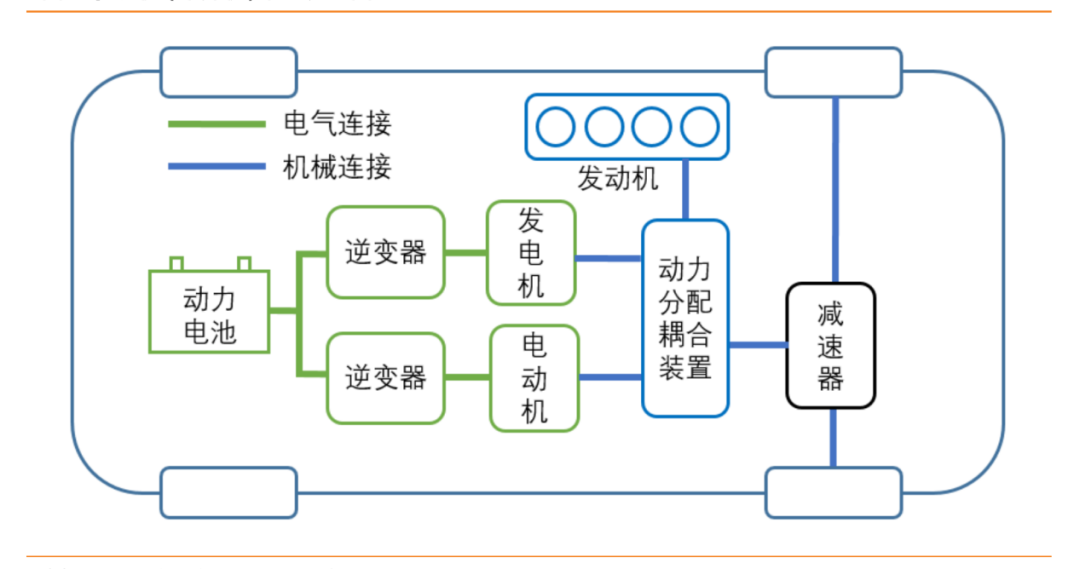
Each of these three configurations has its own advantages and disadvantages. The series connection configuration is simple in structure, easy to arrange, and has a low control difficulty. However, due to the conversion of driving energy from mechanical energy to electrical energy and then to mechanical energy, the loss is relatively large. The most classic application scenario of this type of configuration is an extended-range hybrid.
The parallel configuration is relatively low in cost as it has a single motor. In addition, it is also more suitable for development on the same platform as traditional models. However, because it cannot enter the series working mode, the economy is slightly worse, making it more suitable for PHEV applications.
The advantage of the hybrid configuration is that it can be applied to PHEV and HEV models at the same time. However, the structure is complex, the control difficulty is high, and there are high patent barriers from Toyota and Honda during research and development.
So far, the introduction of hybrid technology has been mostly discussed. When it comes to improving efficiency, just looking at the principle can deeply feel the various ingenious ideas of technology development engineers, and one can understand that from the proposal of technical ideas to their implementation, it will face multidimensional difficulties and trade-offs.
The hybrid goes to the historical stage?In 1901, Porsche founder Ferdinand Porsche mounted a gasoline generator on an all-electric car, solving the problem of short mileage in electric cars and creating the first hybrid car. The technical principle of this hybrid car, similar to Nissan’s e-POWER today, is a series hybrid.
Since then, hybrid technology has been dormant, waiting for the opportunity to become popular in the market.
Today, Toyota and Honda hybrids have already quietly made a lot of profit in the car market, including Corolla Hybrid, Levin Hybrid, Camry Hybrid, Hybrid Accord, and Hybrid CR-V, all highly recognized products in the market. In recent years, the growth of HEV sales in China is mainly monopolized by Honda and Toyota.
There are many reasons why this technology has not been able to take the main stage of history. For example, it has been intentionally or unintentionally ignored because it is a “transitional” choice. Toyota’s patent barrier is too high, making it difficult for later players to break through. The previous technology accumulation did not really solve the pain points of car use…
Today, the signal is very clear. More and more manufacturers plan to join the hybrid ranks and expand this cake. Moreover, for the “double carbon” target, this is also a practical and feasible technological path.
It must be admitted that on the consumer end, traditional fuel vehicles are facing rising oil prices, while pure electric vehicles still have extensive range anxiety. Currently, due to the rise in raw material prices, many models have to raise prices.
On March 18, at the “2022 International Summit on Vehicle Power Systems,” Wang Ruiping, Senior Vice President of Geely Automobile Group, pointed out that the price increase of raw materials has caused a significant increase in battery costs. The cost of hybrid power is only half or less than a quarter of the cost of BEV power, depending on the amount of battery used.
This can effectively alleviate the pressure on the market for fuel price increases. For example, if the fuel-saving rate of the hybrid system exceeds 40%, it means a 40% decrease in fuel costs for hybrid customers.
Wang Ruiping believes that hybrid power technology can drive the majority of fuel vehicles, which account for most of the market demand, to upgrade emissions reduction and is also conducive to the development of electric vehicle technology. “In terms of hardware, from HEV to BEV, the three basic electric technologies can drive each other to share technology improvement.”
According to Tianfeng Securities’ estimation, hybrid cars may have more than 16 times growth space from 2020 to 2025.
The cake is so big, who wants to miss this carnival?
This article is a translation by ChatGPT of a Chinese report from 42HOW. If you have any questions about it, please email bd@42how.com.
